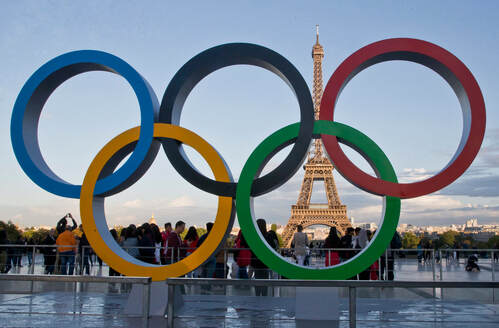|
By: Eduardo Ferreira As time goes on and the future gets greener by the minute, people are starting to question if big sports leagues like the NBA and the NFL are green and if not, how much these leagues impact the issues in the world, and how to stop it. Sustainably speaking, the main problem with these big sports leagues is travel. Even in domestic leagues, such as the NBA, flights across and even outside the country result in large amounts of carbon dioxide emissions. Even in smaller domestic leagues, such as Liga Portugal, carbon dioxide emissions to and from away games pollute the environment. This is just accounting for the carbon dioxide released by the travel of players and coaches; hundreds of people go across the country and even to other countries to watch their favourite football, basketball, and other sports teams compete away from home. This creates an even larger carbon footprint, with hundreds of flights and cars every hour of every day going across the city, across the country and even across continents and oceans. In addition, the construction of stadiums and fields results in large amounts of greenhouse gas emissions. Many larger-scale sports teams have enormous stadiums; such as the Wembley Stadium with a capacity of roughly 90 thousand people, the United Center with a capacity of roughly 20 thousand people, and the Michigan Stadium with a capacity of over 100 thousand people. These stadiums are expensive, with the SoFi Stadium in California costing a whopping 6.22 billion US dollars to build. The sheer size of these sports arenas is unprecedented – for example, Wembley Stadium is roughly 133 meters tall, half of the height of the Empire State Building. Trips, buildings, staff, and maintenance account for extreme amounts of carbon dioxide and greenhouse gas emissions. To reduce these emissions, stadiums could reduce in size, but the stature and appearance of stadiums are what makes them special; imagine watching the current treble winners Manchester City playing in Accrington Stanley's Wham Stadium. Reducing the size of large championships also wouldn't work. The main factor that makes tournaments like the Champions League so successful and fun to watch is that they have the best teams from Europe competing. Turning the competition into a national league instead of an international league would just make it another LaLiga or Premier League. Shrinking the size of national leagues also wouldn't work. Leagues like this only exist because teams from all over the country, such as the US, compete in a single league. Regional leagues do work occasionally; however, only in cases where there are many teams. Some leagues claim to be divided regionally, like the Eastern and Western Conference, but they are truly just dividers. True regional, mainstream leagues are extremely hard to find; a prime example are the interstate championships in Brazil, but even those are out classed by the Brasileirão. In order to improve the "greenness" of the NBA, there could be a removal of the playoffs. Playoffs are a post-season tournament that makes it so that the best 16 teams face off against each other multiple times. This is terribly unsustainable, since the first stage has an average of 80 games – roughly 40 trips in total (41 away and 41 home games). Sometimes these are bus trips, and sometimes plane rides. Removing playoffs and keeping just the league, which is already 82 games long, and a final between the top team in the eastern conference and the western conference to decide who is the winner of that season, would be a viable and sustainable solution. Sports Leagues can never be truly green. Some of the most famous sports use high carbon-footprint vehicles as their main base, such as Formula 1 and the Moto GP. In an average Formula 1 race, 20 cars will travel at roughly 250 kilometers per hour for, at least, 305 kilometers. Considering this, each Formula 1 race you watch with Lewis Hamilton, Max Verstappen, and Charles Leclerc releases roughly 11 thousand tons of carbon dioxide. And these competitions get more or less 1.2 million viewers worldwide on TV and around 50-100 thousand are present at the racetrack. This isn't even accounting for the plane rides since a Formula 1 season takes place at 23 different tracks all around the entire world hundreds of hours per season worth of plane rides. And of course, the World Cups and International competitions. In most cases, 32 national teams with players all around the world will fly in to play in a tournament every so often. For example, the Brazil 2022 World Cup team had players who were playing for clubs in England, France, Spain, Mexico, Italy, and Brazil itself. This is also recurrent in the Basketball world cup, since players from Slovenia play in Spain and players from Brazil play in Czechia. Both these cases mean that hundreds of international flights were taken by players back to their home nations, and then to the host nation of that year's world cup. The Olympics might be even more guilty, since, if every one of the 206 countries represented in the Olympics were to send a maximum of 2,500 athletes, there would be 515 thousand athletes in a singular city. Imagine how many greenhouse gases are produced by plane rides to and from the Olympics and bus rides to and from the venues. This doesn't even take into account the Paralympics or even the Winter Olympics, or even fans, coaches, staff and more. Big sports leagues and competitions provide substantial amounts of greenhouse gas emissions, and there is much to improve. To correct this pressing matter, we must investigate green forms of transportation to and from away games, more sustainable stadiums, venues, and tracks whilst keeping the wonderful world of sports alive.
0 Comments
By C. Gontijo In the world of sports, where competition is often the focus, a new theme is emerging and it is beyond victory on the field, it also pursuits victory for our planet. A movement that seeks to transform athletics into an example of environmental sustainability is growing. As our world struggles with the challenges of climate change and global warming, affecting all types of places and ecosystems, the sports industry has a unique opportunity to lead by example and inspire change.
One sport that is increasingly embracing the principles of green futures is soccer, also known as football in many parts of the world. Soccer, with its global appeal and massive fan base, has the potential to drive significant positive change both on and off the field. At the professional level, many soccer clubs are implementing eco-friendly practices to reduce their carbon footprint. They are installing solar panels at stadiums and using recycled materials in construction projects. These interesting initiatives taken by some clubs are demonstrating their commitment to sustainability. Moreover, some clubs have adopted innovative technologies to minimize water consumption on the pitch and promote biodiversity around their facilities. However, the idea is not limited to professional soccer; it is also being manifested at amateur and beginner levels. Youth soccer leagues and school teams are increasingly incorporating environmental education into their schedules. Players learn about the importance of conservation, recycling, and energy efficiency, both through theoretical instruction and practical activities. An example initiative is a youth soccer team that organizes regular clean-up events in their community by picking up litter from parks and beaches. Not only does this introduce a sense of environmental responsibility in the players, that as children, will have the opportunity to grow with this type of behavior and responsibility as a standard, but it also fosters a deeper connection between sports and nature, an element that is often lost in the world of modernity. Furthermore, some schools are exploring the possibility of transitioning to eco-friendly sports equipment, by, for instance, switching traditional soccer balls that are made from synthetic materials that contribute to plastic pollution, to biodegradable or recycled soccer balls. This way, schools can reduce their environmental impact without compromising the quality of the game. In addition to changing their ways in a practical manner, soccer teams are also using their platform to raise awareness about environmental issues. Clubs are more often using their influence to talk about sustainability and its importance and encourage other fans and spectators of the sport to adopt eco-friendly habits in their daily lives. The movement in soccer is a testament to the power of sports to drive positive change. By embracing environmental sustainability, soccer clubs and players are not only reducing their carbon footprint but also inspiring millions of fans around the world to do the same. As students and athletes, we have a responsibility to advocate for a greener future. Whether it's through participating in clean-up efforts, promoting recycling and conservation, or supporting eco-friendly initiatives in sports, each of us can make a difference. By harnessing the power of sportsmanship and collaboration, we can create a world where athletics thrive in harmony with nature and with modern society. By R. Thomas Currently , sustainability is a vital topic. It is discussed in conventional conversations and even important speeches debating the rising issue of climate change. Dealing with plastic, carbon emissions, recycling and reusing must be thought of in many instances, including sports! The sports community has suffered from lacking new sustainable initiatives, however most recently new and groundbreaking ideas have tackled the issue with finesse.
Firstly, many stadiums and sport venues have become sustainable, from the very start. When building these stadiums or retrofitting them, sustainable materials were used such as implementing energy efficient light, and renewable energy generators like wind turbines or solar panels. Quite recently a new and exciting initiative of making the climate pledge stadium located in Seattle center, to achieve net-zero carbon emission has started. Their goal is to achieve this by 2040 and they are already making vast and impactful changes. Firstly, they Measure and report greenhouse gas emissions on a regular basis and they implement decarbonization strategies such as; efficiency improvements, renewable energy generators, and many other carbon emission elimination strategies. In general, initiatives like these are sure to make a difference and are most probably going to be more frequent in the coming years. Many sport teams and athletes also support charities that provide new ideas and projects towards exciting sustainable measures. Athletes like Serena Williams and Lewis Hamilton are known for their use of fame to shine a light towards sustainable measures and problems. In addition to that, the sport community carries an important role in bringing awareness and education to the global community on climate change, global warming and other pressing issues. Overall, integrating sustainability into sports not only helps reduce environmental impact but also promotes awareness, education, and action on important environmental issues within the global community. By A. HemnaniThe Olympics are a great international multi-sport event! Every four years we gather around to cheer for our country! The joy of the event is contagious! However, have you ever stopped to think about the impact it has on our planet?
A carbon footprint is generated from all the greenhouse gasses that are made by our actions. With less then 100 days left until the 2024 Olympics, what will Paris be doing to minimize its carbon footprint? This year Paris has pinpointed 3 key targets to improve the 2024 Olympics carbon footprint. These 3 targets include: reducing their emission rates, compensating for more than 100% of the residual emissions, and using their social media influence to encourage all the Olympics fans to take actions against climate change. A big part of hosting the Olympics, is the infrastructure this event requires. With a large cost and an even larger Carbon footprint, the past few Olympics have had to build a lot of new stadiums. However, this year Paris will be using 95% of existing or temporary infrastructure for the games. At the end of the Olympics all the temporary infrastructure will be either recycled, repurposed, or reused. This is why Paris has made it a priority to host games in the existing venues. Even with all these fantastic changes to reduce the carbon footprint, Paris has also been adding events to the Olympics, such as: sport climbing, skateboarding, and surfing. These activities could be a big hit, but they will also add to the Carbon footprint. |
Archives
April 2024
|





 RSS Feed
RSS Feed